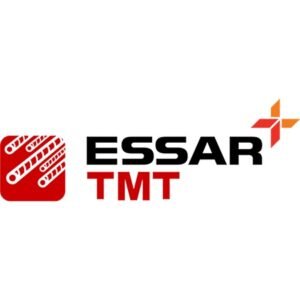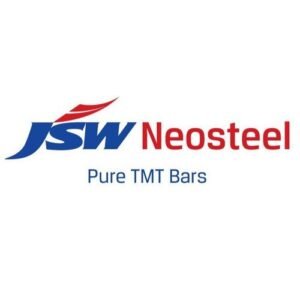
Why to Choose GRKG.
GRKG Overseas is a notable exporter of TMT (Thermo Mechanically Treated) bars, which are a crucial component in the construction industry. TMT bars are known for their high strength, ductility, and resistance to corrosion, making them essential for building durable structures.
Key Points about GRKG Overseas:
- **Product Quality**:
– GRKG Overseas exports high-quality TMT bars that meet international standards.
– The bars undergo rigorous testing to ensure they provide superior strength and longevity.
- **Range of Products**:
– The company offers a wide range of TMT bars in different grades and sizes to meet diverse construction requirements.
– Customization options are available to cater to specific client needs.
- **Export Destinations**:
– GRKG Overseas exports TMT bars to various countries, ensuring global reach and reliability.
– Their export process adheres to international trade regulations and standards.
- **Customer Support**:
– The company provides excellent customer service, including pre-sales and post-sales support.
– They offer guidance on the selection of appropriate TMT bars based on construction needs.
- **Sustainability**:
– GRKG Overseas is committed to sustainable practices, ensuring that their manufacturing processes are environmentally friendly.
- **Competitive Pricing**:
– They offer competitive pricing without compromising on quality, making them a preferred choice for many international clients.
Manufacturing Process of TMT Bars
The manufacturing process of TMT (Thermo-Mechanically Treated) bars involves several stages that include melting, casting, rolling, quenching, and tempering. TMT bars are widely used in the construction industry due to their superior strength, flexibility, and durability. Here’s a detailed look at each stage of the TMT bar manufacturing process:
- **Raw Material Selection**
The primary raw materials used in the manufacturing of TMT bars are iron ore, coal, and dolomite. The quality of these raw materials is crucial for the quality of the final product.
- **Melting**
The raw materials are melted in a blast furnace or electric arc furnace at very high temperatures. The molten iron is then refined in a basic oxygen furnace or an electric arc furnace to reduce the carbon content and remove impurities.
- **Casting**
The refined molten steel is cast into billets. This process involves pouring the molten steel into a continuous casting machine, which solidifies the steel into long rectangular, square, or round shapes, known as billets.
- **Rolling**
The billets are then heated in a reheating furnace to a temperature suitable for hot rolling. The heated billets pass through a series of rolling stands to reduce their thickness and shape them into the desired profile (round bars).
- **Quenching**
Immediately after rolling, the hot bars undergo a process called quenching. In this process, the bars are rapidly cooled using a water spray system. This sudden cooling hardens the outer surface of the bar, forming a martensitic rim while the core remains hot and austenitic.
- **Self-Tempering**
After quenching, the bars undergo a self-tempering process. The heat from the core of the bar flows to the surface, tempering the outer martensitic layer into a structure called tempered marten site. This step ensures the bars have a tough outer surface and a ductile core.
- **Atmospheric Cooling**
The bars are then allowed to cool at room temperature under normal atmospheric conditions. This final cooling process helps in achieving the desired mechanical properties.
- **Cutting and Testing**
Once the bars have cooled, they are cut into desired lengths. Each batch is tested for quality and compliance with industry standards. Common tests include checking the tensile strength, yield strength, elongation, and bend/rebind properties.
- **Packaging and Dispatch**
Finally, the bars are bundled, labelled, and dispatched to various distribution centres and construction sites.
Types of TMT Bars
Thermo-Mechanically Treated (TMT) bars are a critical component in the construction industry, offering high strength and durability. They are categorized based on their strength, ductility, and the standards they adhere to. Here are the primary types of TMT bars:
Based on Strength Grades
- **Fe 415 TMT Bars: **
– Yield Strength: 415 N/mm²
– Features: Adequate ductility and bendability, commonly used in residential construction.
- **Fe 500 TMT Bars: **
– Yield Strength: 500 N/mm²
– Features: Higher strength and more resistance to seismic forces, suitable for high-rise buildings and other infrastructure projects.
- **Fe 550 TMT Bars: **
– Yield Strength: 550 N/mm²
– Features: Higher tensile strength, typically used in heavy-duty structures like industrial projects and large infrastructure.
- **Fe 600 TMT Bars: **
– Yield Strength: 600 N/mm²
– Features: Very high strength, limited ductility, used in special projects requiring high load-bearing capacity.
Based on Ductility
- **High Ductility TMT Bars (Fe 500D, Fe 550D): **
– Characteristics: Enhanced ductility with ‘D’ standing for ductility. These bars have higher elongation values compared to standard TMT bars.
– Uses: Suitable for areas prone to earthquakes and other dynamic loads due to their better elongation properties.
- **Super Ductile (SD) TMT Bars: **
– Characteristics: Exceptional ductility and elongation, exceeding the specifications of regular high ductility TMT bars.
– Uses: Essential in construction projects where the highest levels of safety and resilience are required, especially in seismic zones.
Based on Standards
- **IS Standards (Indian Standards): **
– Examples: IS 1786:2008 for TMT bars in India.
– Characteristics: These bars comply with the quality and testing standards specified by the Bureau of Indian Standards (BIS).
- **International Standards: **
– Examples: ASTM (American Society for Testing and Materials), BS (British Standards), and others.
– Characteristics: TMT bars manufactured to meet the specific international codes and quality standards for global construction projects.
Common Sizes of TMT Bars
TMT (Thermo-Mechanically Treated) bars are widely used in construction for reinforcing concrete structures. They come in various sizes, typically distinguished by their diameter. The sizes of TMT bars are usually specified in millimetres (mm). Here are the common sizes of TMT bars:
- 8 mm: Often used in lighter structures and for constructing beams and slabs where the load is relatively less.
- 10 mm: Suitable for residential building structures and for making cross beams and small-scale projects.
- 12 mm: Commonly used in the construction of columns and slabs, providing a good balance between strength and flexibility.
- 16 mm: Frequently used in large construction projects such as bridges, dams, and heavy load-bearing structures.
- 20 mm: Used in large construction projects, offering high strength and stability for heavy load-bearing structures.
- 25 mm: Suitable for very heavy structures and industrial projects where extreme strength is necessary.
- 28 mm: Used in specialized projects with very high strength requirements.
- 32 mm: Employed in large-scale infrastructure projects such as highways, bridges, and multi-story buildings.
- 36 mm: Used for highly demanding structures requiring substantial strength and support.
These sizes help in providing the necessary tensile strength and flexibility to concrete structures, ensuring safety and durability. The choice of TMT bar size depends on the structural requirements of the project.
Some of ours Supporting Partners








